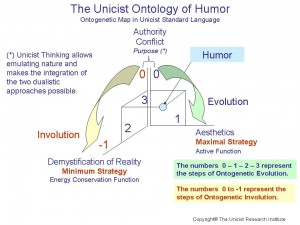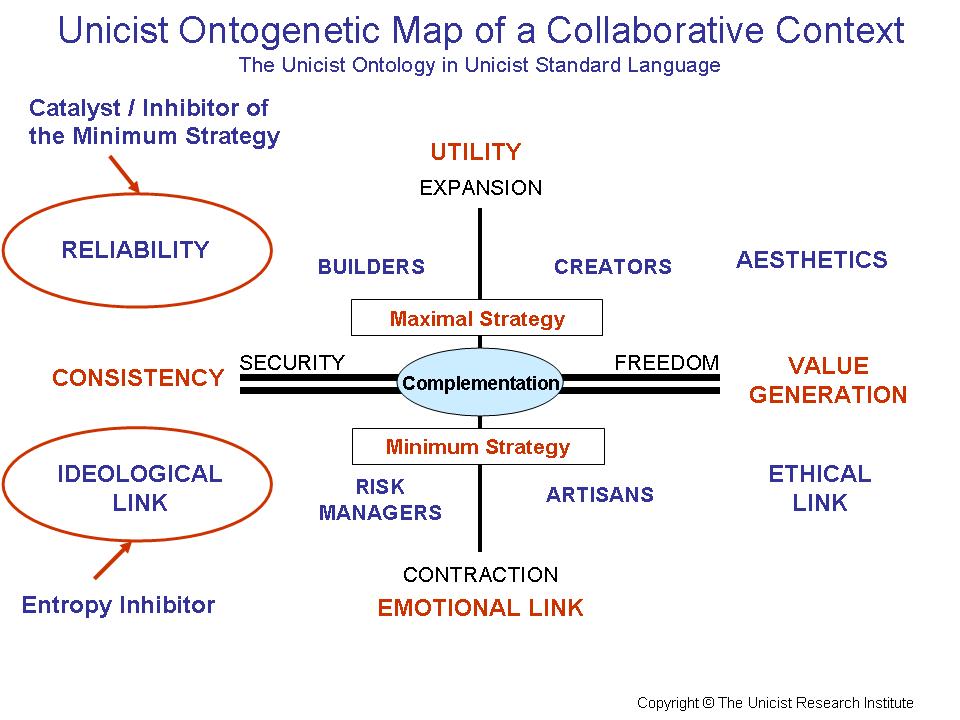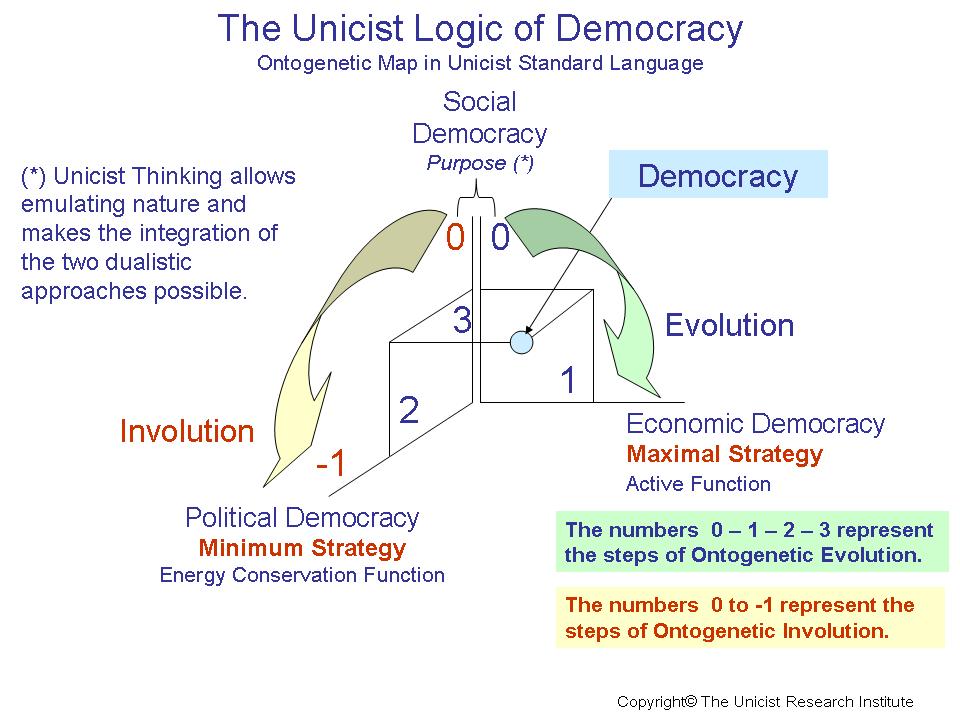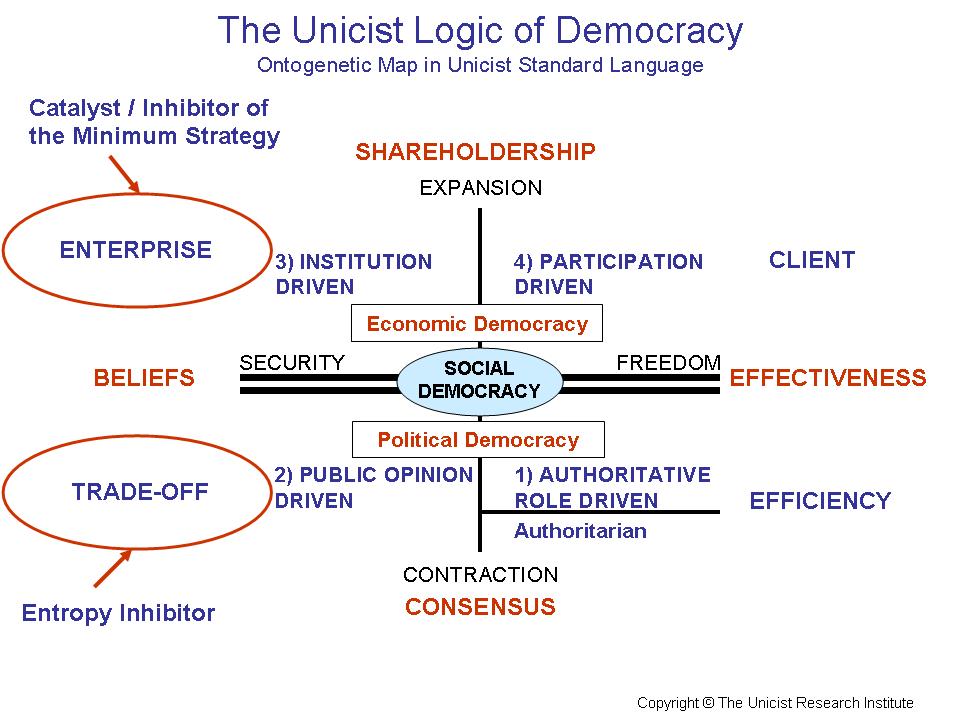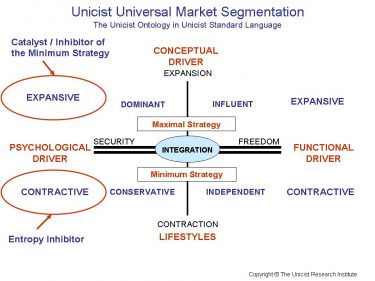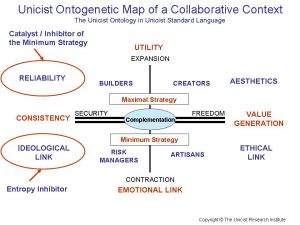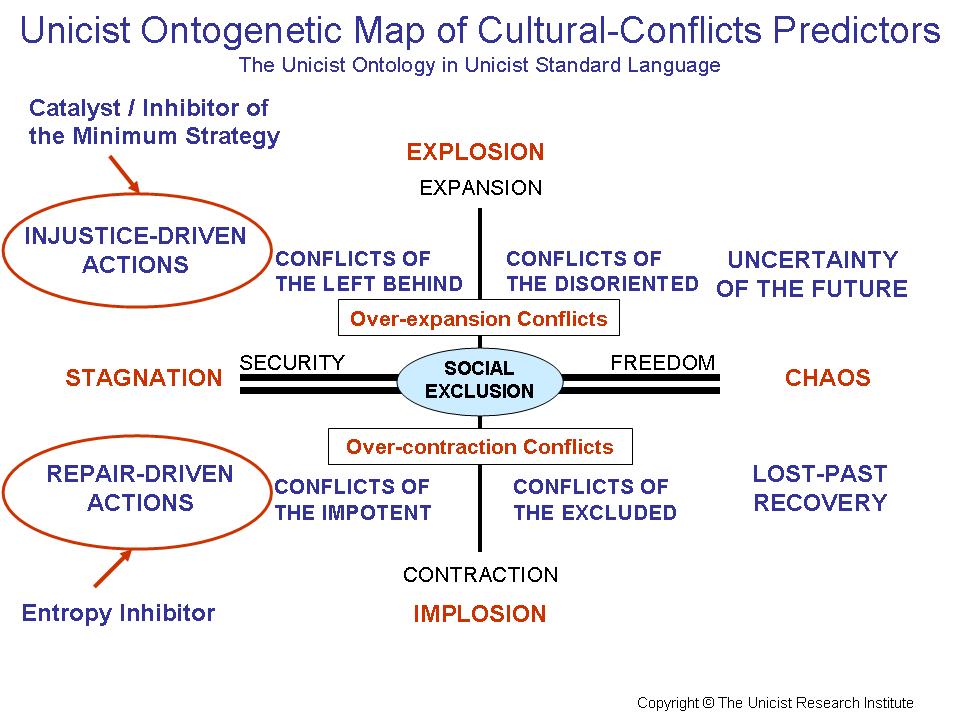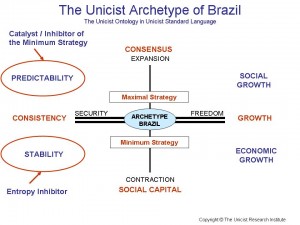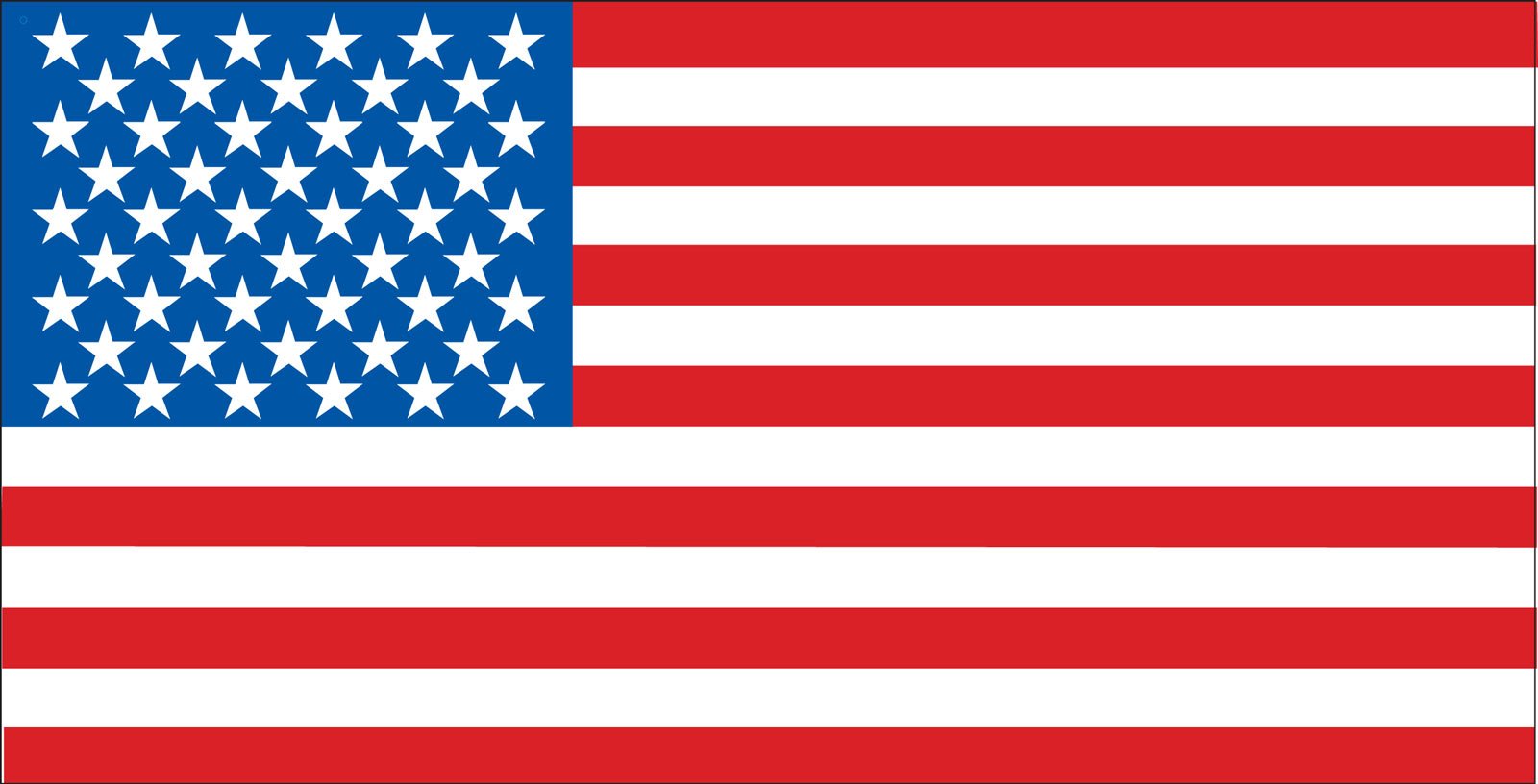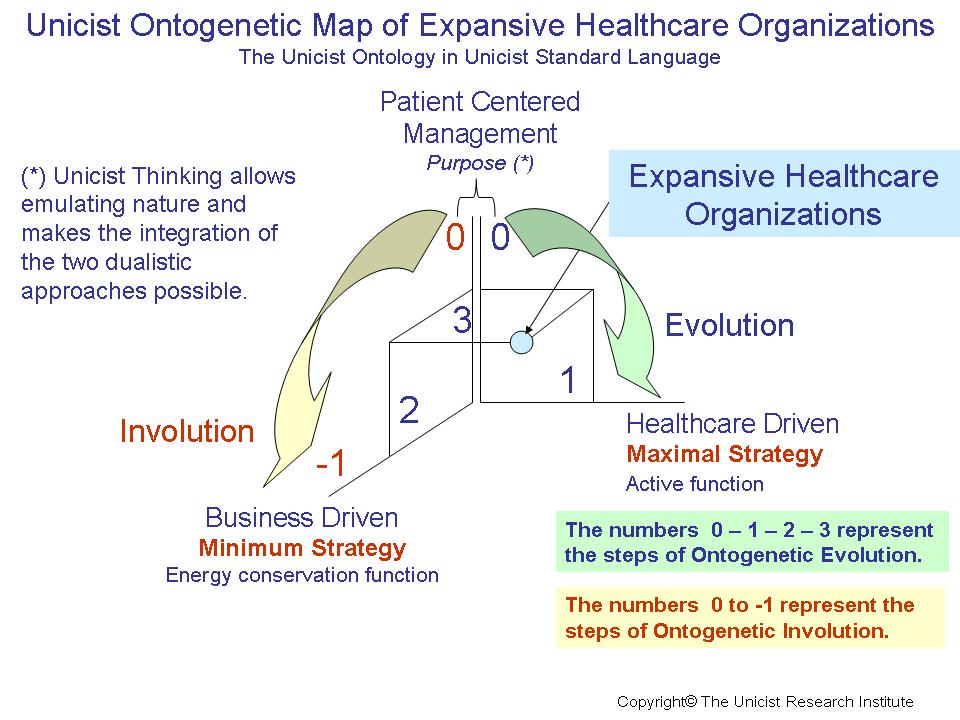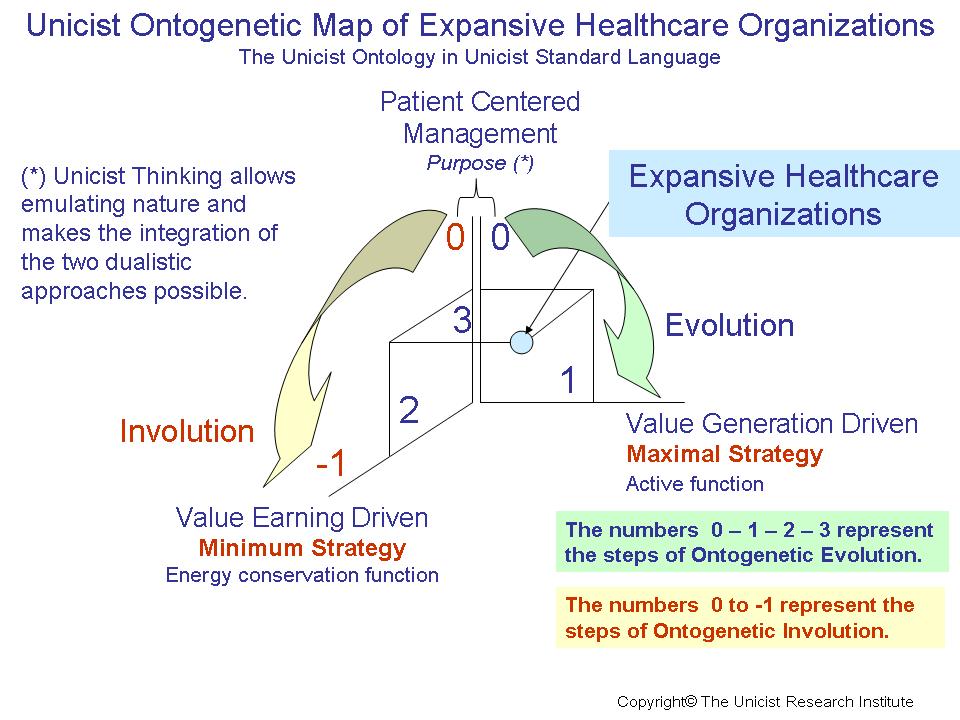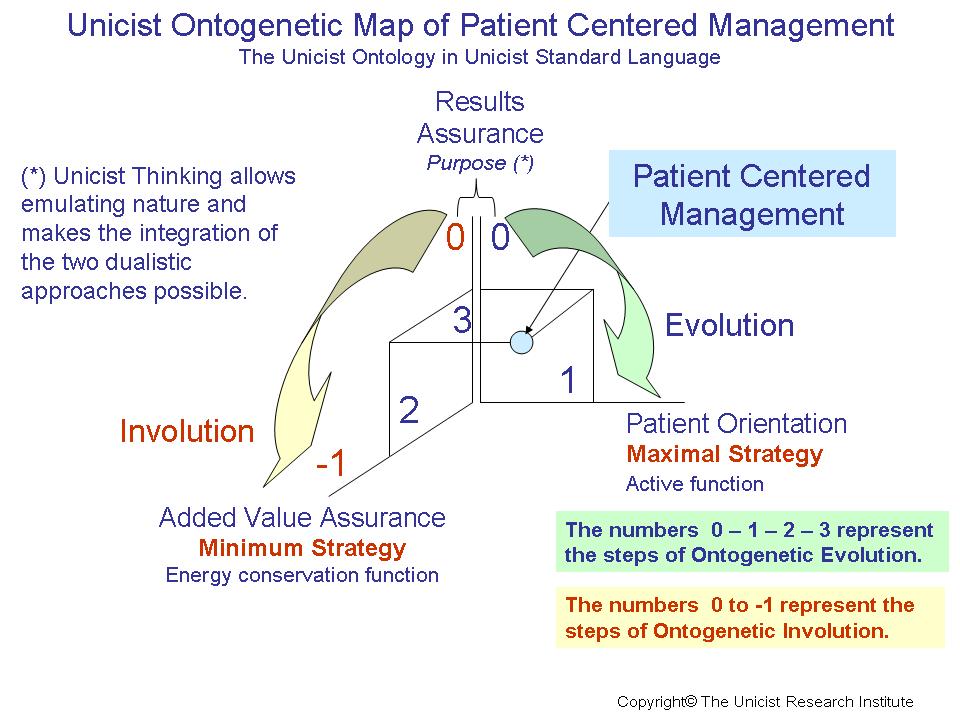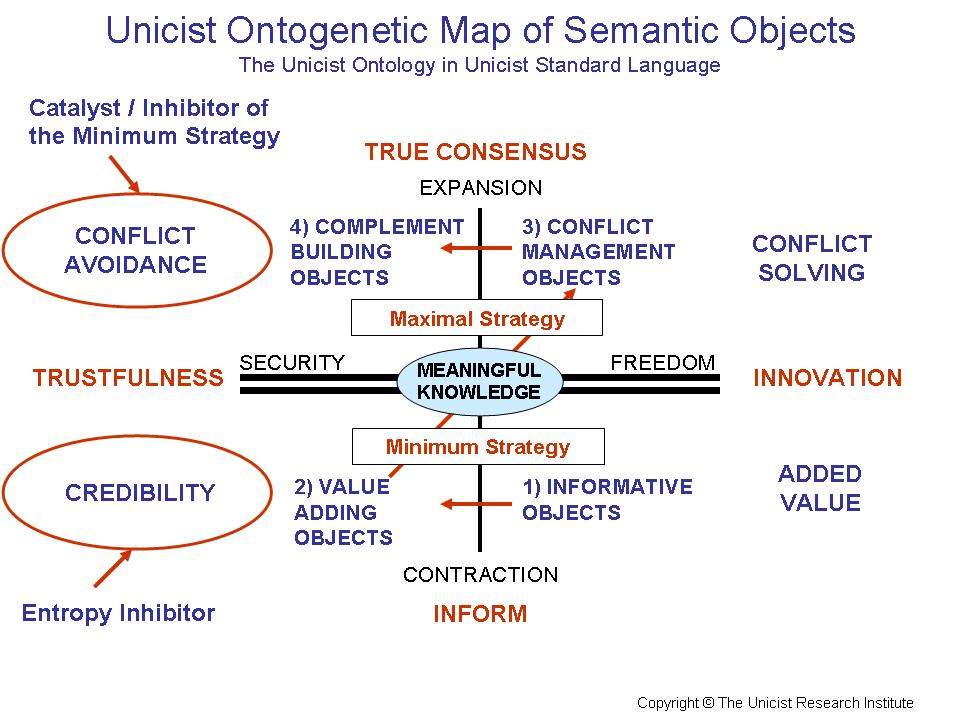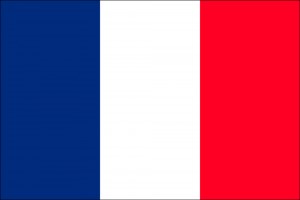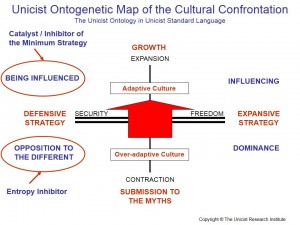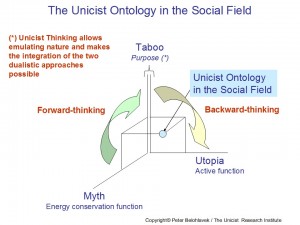Internet is becoming a “Virtual Emulation of the Real World” which drives to major changes in its development and use. This is a 10-year future scenario developed using unicist double dialectical logical inferences based on the actual conceptual functionality of Internet, the available technologies and those that are being introduced.
The purpose of this future research was to provide the trends of this activity to the worldwide community of Internet users. This research was led by Peter Belohlavek and Diego Belohlavek.
To access the basics on Unicist Future Research please enter:
www.unicist.org/sdp.shtml
Introduction

The reach of one’s globalization is defined
by the limit of the pronoun “WE”…
The name Internet or www is already an anachronism because it describes an entity that seems to provide a network between the participants, but in fact evolved towards being an entity that has its own “artificial life”.
Internet, as an entity, is considered to have an artificial life because, as a timeless organization, it has a life of its own, and grows and evolves as a “virtual emulation of the world”.
At the beginning, it was a workspace for academics, scientists and researchers. It was an environment to integrate people dealing with technologies and science.
But it evolved to become the first global, bottom-up built, democratic, multi-minorities organized entity that emulates the world providing a reliable environment.
Now the Internet has already become an emulation of the world. As such, it is integrated by multiple cultures, languages, ethnicities, religions and histories that are integrated by a common meta-language and are ruled by a universal “common law”.
This common law is evolving extremely fast in order to avoid chaos and establish the limits between the inlaws and the outlaws without inhibiting the power of the bottom-up democracy that underlies Internet.
The meta-language is a virtual communication language that allows integrating people, building social capital, providing a pastime space, allowing addictive behaviors, making business and integrating all the aspects of human behavior that can be managed in a virtual environment.
The drivers towards Internet as an emulation of the world are:
- The influence of the Internet generation
- The anthropocentricity of human behavior
- The globalization of the markets
- The business opportunities
- The democratization that is implicit in its bottom-up approach
The new technologies that make the emulation possible are:
- The Web 2.0 and Future Web 3.0 technologies
- The responsive technologies to adapt to multiple hardware
- The development of virtual, commercial and semantic objects
- The segmentation based on predictors that allow building commercial communities.
What will have happened during the next 10 years?
- Internet will have become a business catalyst for all the central B2B providers.
- It will be the main tool for virtual collaboration and virtual marketing.
- It will have empowered the transparency and reliability of central participants.
- The parallel internet world will have grown enormously and will have generated the need to control it.
- A “common law” system will have been established.
- People will have become multi-minorities organized based on their values and interests.
- Education will have evolved focused on learning using virtual tools, changing structurally the role of teaching.
- Social networks will have changed towards multi-segmented communities in order to become commercially feasible.
- Customer support, counseling and coaching will be centrally managed on the Internet.
- Object driven marketing will be the core of the business use of the Internet.
- Healthcare will be strongly sustained by virtual monitoring and servicing.
The Real World and the Parallel World on the Internet
Internet emulates the real world and as such it has differentiated positions for its participants, which define the power they have in the world.
The paradox is that, although Internet is democratic, which means that everyone can earn a place based on the value that they add, the differentiation between the participants is frequently extreme.
There are two worlds in this “artificial world” defined by the Internet:
- A real world for those who participate in an adapted way.
- A parallel world for those who participate in an over-adapted way.
1) The Real World of Internet
Four segments have been identified in the Real World:
In the next ten years, within the Real World Internet, four segments that incipiently exist will be clearly developed:
 The First World: It is the segment of all the websites that open the possibilities of the users by providing them a vision of the world that expands their boundaries. It is extremely democratic and ethic driven. The success of those that are in this segment depends on the capacity to adapt to changes in the environment while introducing changes to the environment. Google is an example of this segment. This segment allows using the Internet as a gravitational object to influence the behavior of the environment and as a catalyst for social actions and businesses.
The First World: It is the segment of all the websites that open the possibilities of the users by providing them a vision of the world that expands their boundaries. It is extremely democratic and ethic driven. The success of those that are in this segment depends on the capacity to adapt to changes in the environment while introducing changes to the environment. Google is an example of this segment. This segment allows using the Internet as a gravitational object to influence the behavior of the environment and as a catalyst for social actions and businesses.
The Second World: it is the world of all the servicing websites that add value to their users. This second world is more segmented and is focused on the minority that is a user of their services. It might also be multi-segmented when their service deals with social or commercial distribution. eBay is an example of this world. E-banking is also an example of this segment. Their success depends on their capacity of interpreting the needs of the segments and providing first choice alternatives for their users. This world allows using Internet as a catalyst for social actions and businesses.
The Third World: This is the world of all those that provide a space for individual exposure to their users; their value is given by their capacity to be an adequate vehicle to satisfy the individual need of being recognized. The social networks are examples of this world. This segment is based on building apparent relationships, which provide apparent recognition to the members. Their success depends on their capacity to build a true community that provides added value and not only a hollow space for individual expressions. This world allows using Internet as a vehicle for social and commercial proposals to their members.
The Fourth World: It is the world of the websites that have been built to install an organization, individuals or ideas in the Internet This segment is composed by the hygienic websites that need to exist in order to present an individual, an institution or an idea on the Internet, but that have no added value in themselves. These websites are based on the presentation of facts, actions or ideas without presenting any value adding proposal but “selling” an idea to the market. This is the massive world of the Internet that generates no feeling of belonging on behalf of the users. This world allows using Internet as a vehicle for virtual brochures for the market.
2) The Parallel World of Internet
There is also a parallel world on the Internet that is integrated by websites that are part of a pastime activity for those who manage them.
Four segments have been identified in the Parallel World:
 Conspirators: This segment is composed by those websites that follow conspiracy theories that always publish an alternative version of an event that is happening or happened in the past.
Conspirators: This segment is composed by those websites that follow conspiracy theories that always publish an alternative version of an event that is happening or happened in the past.
Self-fulfilling: these are the websites of those individuals who consider that their opinion is important in the world and publish it without considering the actual added value of what they are publishing.
Terrorists: these are the websites that exert the power of destruction, including the self-destruction of what is part of an institutional structure.
Hackers: these are the websites that invade others in order to demonstrate their intellectual power and the weakness of others.
History of the Future – Internet Society
On October 24, 1995, the FNC unanimously passed a resolution defining the term Internet. This definition was developed in consultation with members of the internet and intellectual property rights communities. RESOLUTION: The Federal Networking Council (FNC) agrees that the following language reflects our definition of the term “Internet”. “Internet” refers to the global information system that — (i) is logically linked together by a globally unique address space based on the Internet Protocol (IP) or its subsequent extensions/follow-ons; (ii) is able to support communications using the Transmission Control Protocol/Internet Protocol (TCP/IP) suite or its subsequent extensions/follow-ons, and/or other IP-compatible protocols; and (iii) provides, uses or makes accessible, either publicly or privately, high level services layered on the communications and related infrastructure described herein.
The Internet has changed much in the two decades since it came into existence. It was conceived in the era of time-sharing, but has survived into the era of personal computers, client-server and peer-to-peer computing, and the network computer. It was designed before LANs existed, but has accommodated that new network technology, as well as the more recent ATM and frame switched services. It was envisioned as supporting a range of functions from file sharing and remote login to resource sharing and collaboration, and has spawned electronic mail and more recently the World Wide Web. But most important, it started as the creation of a small band of dedicated researchers, and has grown to be a commercial success with billions of dollars of annual investment.
One should not conclude that the Internet has now finished changing. The Internet, although a network in name and geography, is a creature of the computer, not the traditional network of the telephone or television industry. It will, indeed it must, continue to change and evolve at the speed of the computer industry if it is to remain relevant. It is now changing to provide new services such as real time transport, in order to support, for example, audio and video streams.
The availability of pervasive networking (i.e., the Internet) along with powerful affordable computing and communications in portable form (i.e., laptop computers, two-way pagers, PDAs, cellular phones), is making possible a new paradigm of nomadic computing and communications. This evolution will bring us new applications – Internet telephone and, slightly further out, Internet television. It is evolving to permit more sophisticated forms of pricing and cost recovery, a perhaps painful requirement in this commercial world. It is changing to accommodate yet another generation of underlying network technologies with different characteristics and requirements, e.g. broadband residential access and satellites.
New modes of access and new forms of service will spawn new applications, which in turn will drive further evolution of the net itself.
The most pressing question for the future of the Internet is not how the technology will change, but how the process of change and evolution itself will be managed. As this paper describes, the architecture of the Internet has always been driven by a core group of designers, but the form of that group has changed as the number of interested parties has grown. With the success of the Internet has come a proliferation of stakeholders – stakeholders now with an economic as well as an intellectual investment in the network.
We now see, in the debates over control of the domain name space and the form of the next generation IP addresses, a struggle to find the next social structure that will guide the Internet in the future. The form of that structure will be harder to find, given the large number of concerned stakeholders. At the same time, the industry struggles to find the economic rationale for the large investment needed for the future growth, for example to upgrade residential access to a more suitable technology. If the Internet stumbles, it will not be because we lack for technology, vision, or motivation. It will be because we cannot set a direction and march collectively into the future.
http://www.internetsociety.org
Synthetic Information of the Concepts included in this Future Research
The Concept of Internet
Functionally, Internet can be defined as an access to an “emulation to the world” and to a “parallel world”. Internet mutated since its creation. It began as a tool and is being transformed into an emulation of the world.
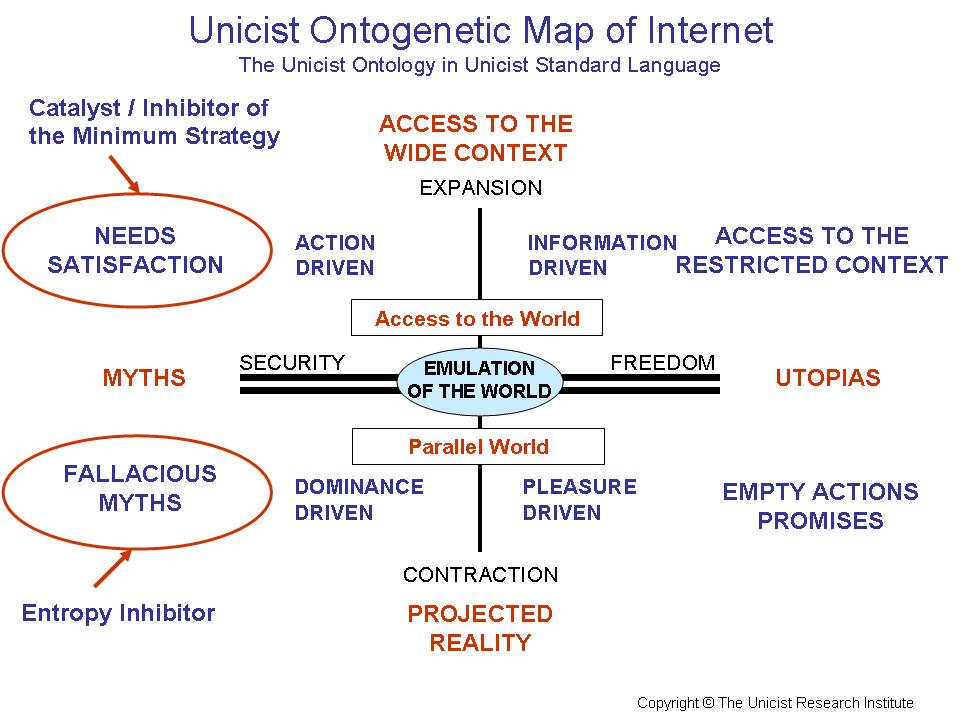 The emulation of the world implies that the Internet builds a homologous reality that allows people to adapt to the world, provides a vision of reality and a virtual way to experience it.
The emulation of the world implies that the Internet builds a homologous reality that allows people to adapt to the world, provides a vision of reality and a virtual way to experience it.
The emulation of the world is the core of what was introduced by the Internet providing an environment that allows people to have a virtual contact to the world.
Internet gives access to the wide context of the world limited by the use of languages and the multi-segmented content. Internet is a bottom-up building of the world which naturally includes the strengths and weaknesses of human beings.
It increases the level of transparency of human actions although, at a first sight, it is very difficult to perceive the truth and falsity of the information. As an emulation of the real world, Internet has all its characteristics in terms of credibility, reliability and predictability.
The Concept of Internet as an Emulator of the World
The emulation of the real world is what has made and makes Internet a powerful environment to influence people. The emulation of the world does not happen in the WWW, it happens in the mind of the people who use the Internet.
 As any emulation in mind, Internet provides the stimuli that allow individuals to envision the real world and have a virtual experience within it.
As any emulation in mind, Internet provides the stimuli that allow individuals to envision the real world and have a virtual experience within it.
The purpose of these stimuli is to build and sustain the building of a homologous reality that allows making decisions and developing actions to transform such virtual stimuli into actions in the real world.
The original purpose of the WWW was to provide a tool to develop work. The mutation of the system integrated a pastime space and an addiction space in this virtual reality.
The WWW is addictive for all those who are trapped in an environment of uncertainty, hopelessness, impotence or absence of a role. Internet allows them to avoid the responsibility for solving their problems.
The use of Internet provides these individuals with places where they assume the role of “virtual fundamentalists” which makes them feel as part of a community. Basically, they access pleasure addictions and spiritual/rational addictions in order to have their role in the world.
The pastime space included in the internet provides the possibility of developing actions that bring subjective fulfillment to those who participate in them. Pastime activities always include the integration of pleasure and dominance that allow participants to increase their feeling of self-esteem.
The integration of a space for addictions, for pastime is only meaningful if there is a work space that justifies the use of internet. The integration of these spaces emulates reality creating a place where people consider that they can transfer these experiences to the real world.
The Concept of Pastime Activities
A paradigmatic example of pastime activities is the concept of social networks that integrates all the segments of pastime activities. To understand this phenomenon it is necessary to manage the concept of pastime activities.
 Pastime activities are time consuming actions that have no value adding purpose but the achievement of pleasure in an environment of dominance. This means that they are empty activities with no specific goals which allow avoiding responsibilities.
Pastime activities are time consuming actions that have no value adding purpose but the achievement of pleasure in an environment of dominance. This means that they are empty activities with no specific goals which allow avoiding responsibilities.
Pleasure is the consequence of the satisfaction of a need; therefore it has to be considered that the instant of pleasure is followed by the feeling of needing to satisfy another need that arouse from the first action.
This can only happen if an individual is in control of the situation or, at least, in control of the consequences of the actions that are happening. This drives pastime activities to work under the “dictatorship” of emotions in order to achieve the goal of entertaining individuals.
The paradox is that at the end of a pastime activity most of the people feel empty, just recalling in a rational way the experience they had.
The Concept of Internet as a Business Catalyst
One of the roles of Internet is to work as a business catalyst for the real world. It is a marketplace in itself, which works as a catalyst for the real world marketplace if certain conditions are given.
The purpose of internet as a catalyst is to build a link between sellers and buyers. To achieve this goal it is necessary that the websites had demonstrated to have a gravitational influence on the market that is being influenced and the necessary critical mass to build a true complementation with the market.
 This implies having a strong competitive capacity within the limits of a cooperative attitude with the potential customers.
This implies having a strong competitive capacity within the limits of a cooperative attitude with the potential customers.
Complementation building requires developing a functional link that is fully dependent on the value proposition that is made. But at the same time it implies being able to build a personal link that deals with the personal benefits for the customers to achieve a true complementation, which requires that both the value proposition and the seller’s organization have been “bought”.
Conclusions
The Internet became an extreme exponent of democratic development with its strengths and weaknesses. This implies that has become an emulation of the world providing equal opportunities for all the participants.
The paradox is that these equal opportunities can only be taken by those who are able to deal with the three basic conditions that are implicit in a democracy:
- Transparency
- Ethics
- Reliability
It is expected in the next ten years, within the trend of emulation, that the Internet will have developed the necessary common law that rules the non-institutionalized organizations, to sustain the rights of the owners of intellectual property of the contents that are used and to avoid the destruction or downgrading of the Internet by those that are threatened by its power (as a technological tool, as a service provider, as a marketplace and/or as a commercial catalyst).
The core of this new stage is to be able to build segmented objects that allow focusing on the micro-minorities that participate in this “artificial world”.
If you want to access more information about this study please contact n.i.brown@unicist.org
Unicist Press Committee
NOTE: The Unicist Research Institute was the pioneer in using the unicist logical approach in complexity science research and became a private global decentralized leading research organization in the field of human adaptive systems. It has an academic arm and a business arm.
http://www.unicist.org/repo/#Unicist
